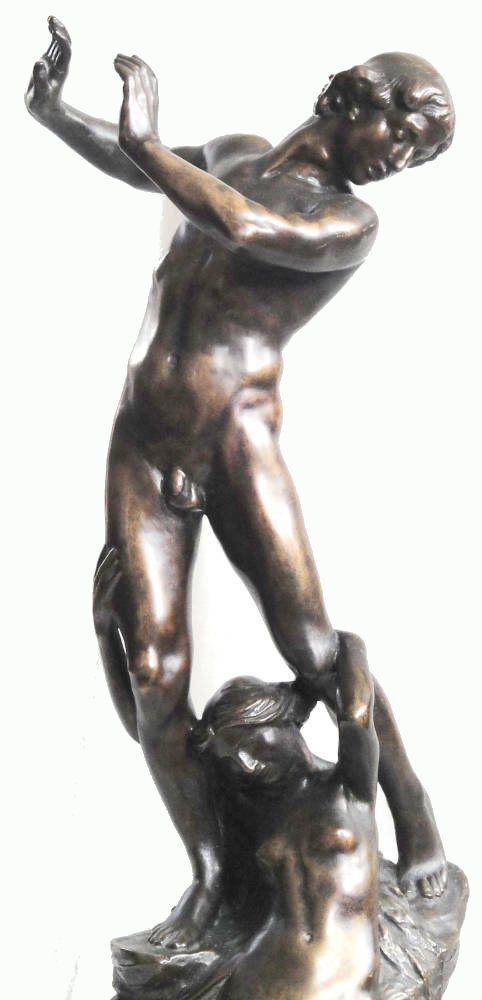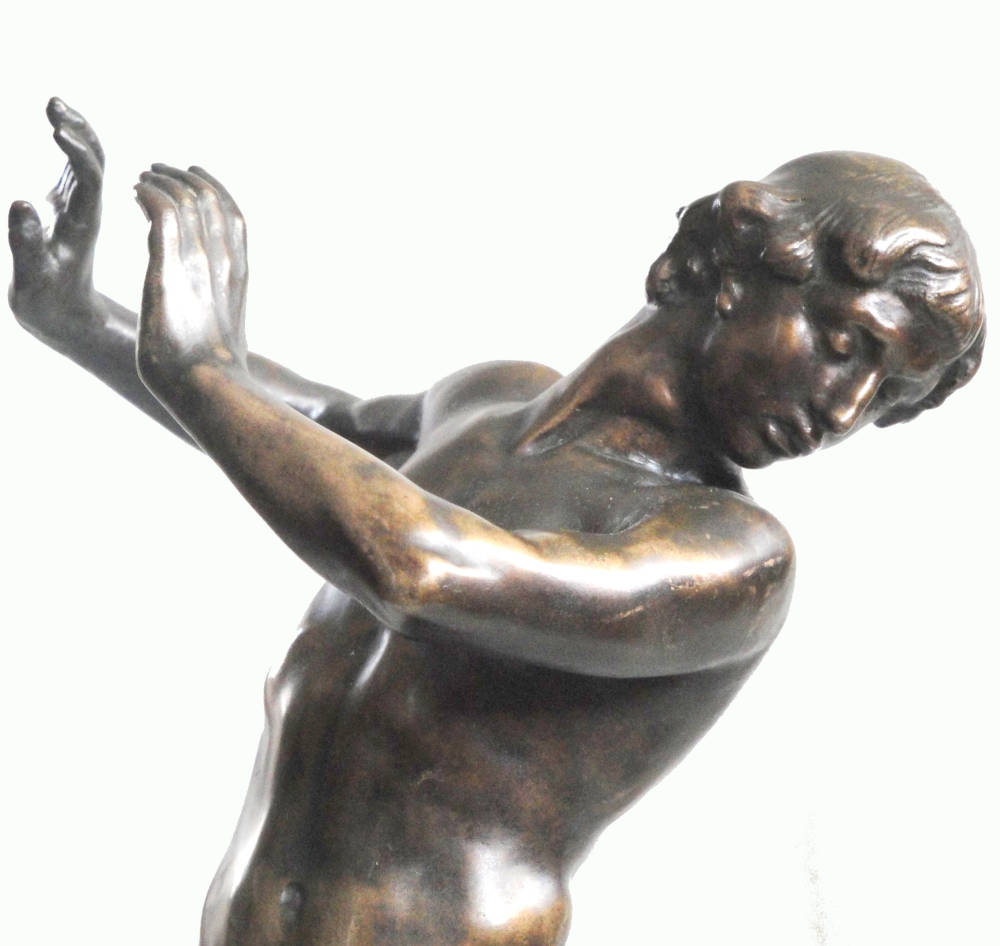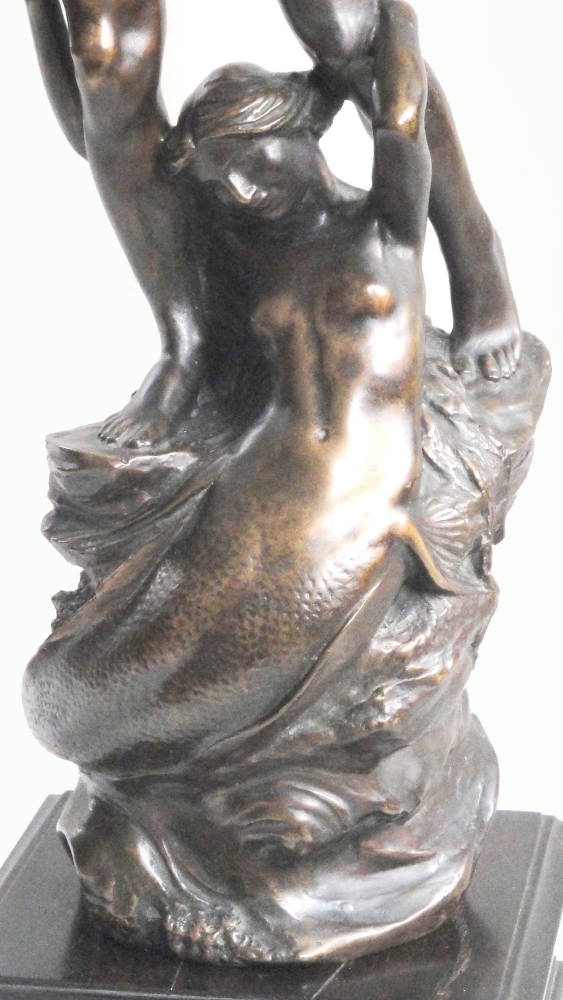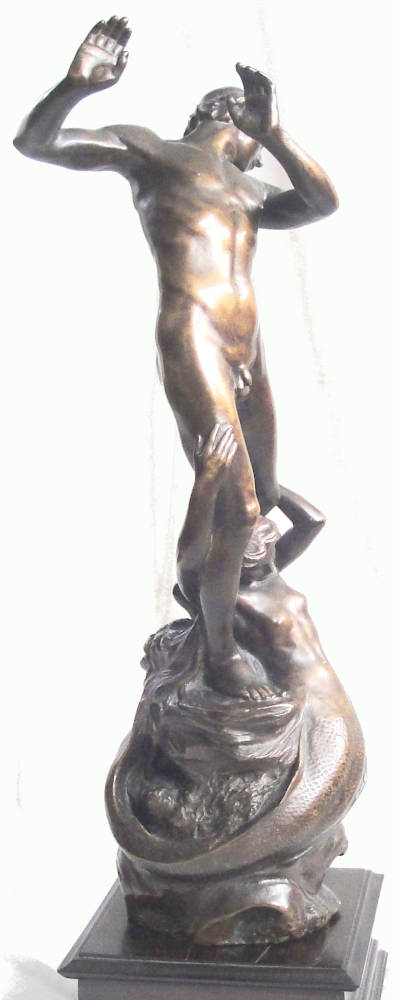[Photographs by the owner. You may use these images without prior permission for any scholarly or educational purpose as long as you link your document to this URL in a web document or cite the Victorian Web in a print one. — George P. Landow]


Hylas by Henry Alfred Pegram (1862-1937). Bronze. 48cm high, 58cm high with base. 1909. Private collection. Signed: “HENRY PEGRAM 1909” [on side of base]. The statue, which was sold by Bonhams as The Siren, bears a date thirteen years earlier than that of the life-size version (1922) installed in St John's Lodge Gardens, Regent's Park, London in 1933. The owner asks, “Did Pegram have the small version ready and only put up the large statue later, or is there another large version somewhere and this is the reduction for that one?” [Click on images to enlarge them.]

Hylas was one of the Argonauts, a handsome youth loved by Hercules. He was sent to get water from a spring, but captured by the admiring water nymphs, never to be seen again (see Bullfinch 164). In her discussion of the Hylas in Regent's Park, Jacqueline Banerjee points out that “the sculptor has caught the very moment of capture, as a nymph clasps the youth's legs, catching him almost off balance, and Hylas looks down over his shoulder in dismay. Pegram was often inspired by subjects associated with the water (cf. The Bather (1894), A Sea Idyll (1902), By the Waters of Babylon (1906). It seems that once he himself had only just escaped Hylas's fate, when he was saved from drowning in the sea at Sussex (see "Pegram, Henry Alfred"). Knowing this makes this particular sculpture seem all the more poignant.”



Related Material
- Signature and date inscribed on base
- Illustrations and discussion of the Hylas in Regent’s Park
- Hylas and the Nymphs (1896) by John William Waterhouse
- Making Myth Real: Hylas and the Nymphs
Last modified 19 October 2017